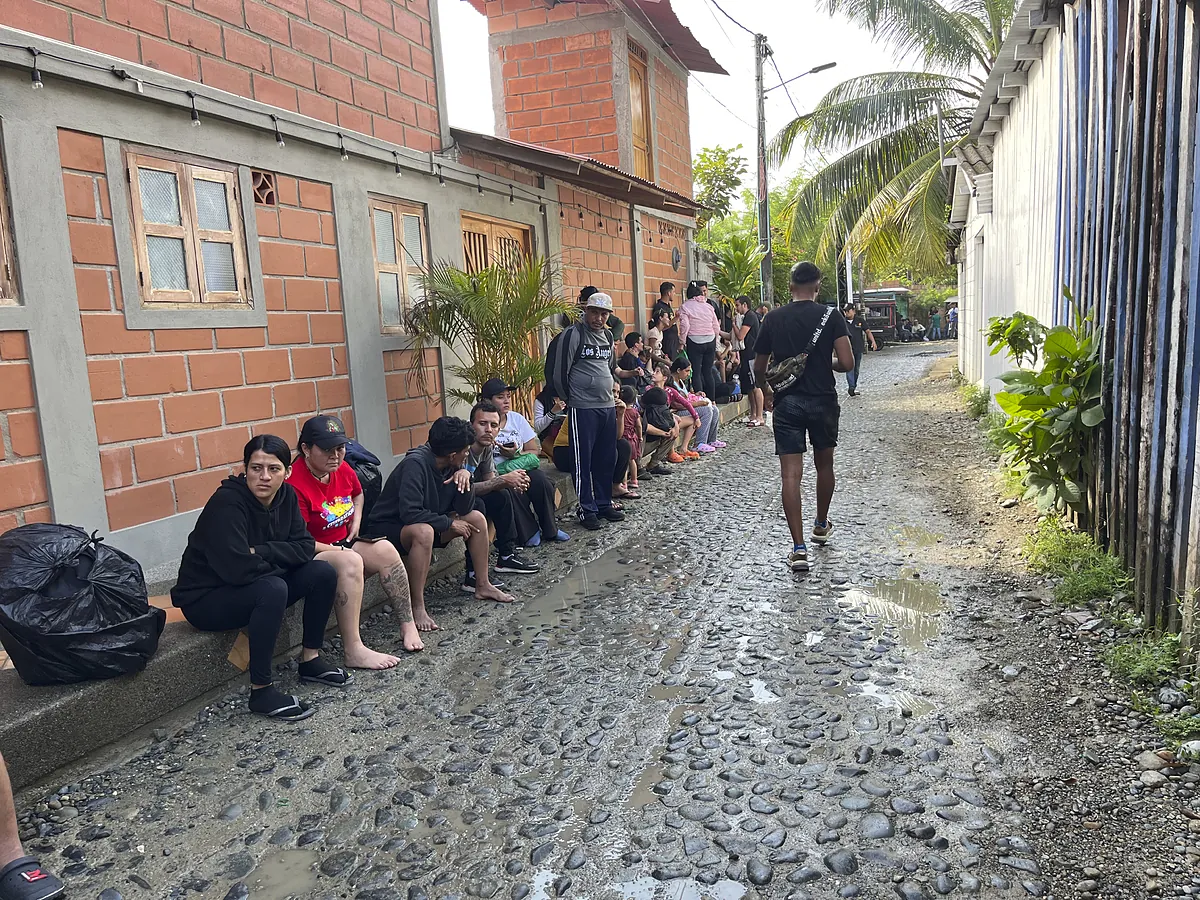Colombian Economy: Navigating the Ripple Effects of Trump's Migration Policy
Editor’s Note: The impact of Trump's migration policies on the Colombian economy continues to unfold, presenting both challenges and opportunities. This article delves into the key aspects of this complex relationship.
Why This Matters
The United States' immigration policies, particularly those enacted under the Trump administration, significantly impacted the Colombian economy. Understanding these effects is crucial for policymakers, investors, and anyone interested in Latin American economic trends. This article will explore the shifts in remittance flows, agricultural markets, and labor dynamics, ultimately providing a clearer picture of Colombia's economic resilience and vulnerabilities. We will analyze the long-term consequences and discuss potential future scenarios. Key terms like remittances, agricultural exports, labor market, and trade relations will be central to our analysis.
Key Takeaways
| Aspect | Impact |
|---|---|
| Remittances | Decreased initially, showing signs of recovery but with altered patterns. |
| Agricultural Exports | Experienced both positive and negative impacts depending on the product. |
| Labor Market | Faced adjustments due to changes in migration patterns. |
| Trade Relations with the US | Underwent fluctuations but remained generally stable. |
Colombian Economy: Navigating a Shifting Landscape
The Trump administration's immigration policies, characterized by stricter border controls and reduced legal migration pathways, created significant ripple effects throughout the Colombian economy. While initially causing disruption, Colombia demonstrated a capacity for adaptation and diversification.
Key Aspects of the Impact
- Remittances: A major source of foreign income for Colombia, remittances from Colombians living in the US experienced a temporary decline. However, these flows have shown signs of recovery, though the channels and amounts have shifted.
- Agricultural Exports: Certain agricultural products benefited from increased demand in the US due to labor shortages. However, other exports faced challenges related to trade negotiations and market access.
- Labor Market: Changes in migration patterns impacted Colombia’s labor market, particularly in sectors previously reliant on migrant workers. This led to adjustments in wages and employment levels.
- Trade Relations: While trade relations between Colombia and the US experienced some volatility, the overall impact remained relatively modest compared to other economic factors.
Detailed Analysis
Remittances: The initial decline in remittances necessitated a reassessment of social support programs and financial strategies for families relying on this income. Data analysis reveals a gradual recovery, albeit at a slower pace than before.
Agricultural Exports: The impact on agricultural exports varied considerably. Products like flowers experienced increased demand, while others faced challenges due to tariff adjustments or logistical hurdles.
Labor Market: The changes in migration resulted in both opportunities and challenges for Colombia’s labor market. Some sectors saw a rise in domestic employment, while others faced skill shortages.
Trade Relations: While some trade disputes arose, the overall trade relationship between the two countries remained relatively stable, demonstrating resilience in the face of political changes.
Interactive Elements
Remittance Flows: A Shifting Landscape
The shift in remittance flows underscores the need for increased financial inclusion and diversification strategies to reduce dependence on a single income source. This also highlights the importance of supporting Colombian entrepreneurs and small businesses.
The Agricultural Sector: Adapting to Change
Colombia’s agricultural sector demonstrated resilience by adapting to the changing demands and market conditions. Diversification of exports and strategic investment in value-added processing proved essential for sustaining growth.
People Also Ask (NLP-Friendly Answers)
Q1: What is the main impact of Trump's migration policy on the Colombian economy?
A: Trump's policies initially decreased remittances from the US, but also led to shifts in agricultural exports and labor markets, requiring Colombia to adapt economically.
Q2: How did the change in remittances affect Colombian families?
A: The decrease in remittances initially strained many families, prompting the need for greater economic diversification and social support programs.
Q3: Did Trump's policies benefit any sectors of the Colombian economy?
A: Some agricultural sectors, like flower exports, saw increased demand in the US due to labor shortages, creating positive impacts.
Q4: What are the long-term implications of these changes?
A: Long-term implications include the need for stronger domestic economic growth, diversification away from reliance on remittances, and continued adaptation to fluctuating US policy.
Q5: How is Colombia responding to these economic changes?
A: Colombia is focusing on economic diversification, bolstering social programs, and investing in skill development and entrepreneurship to mitigate the impact of fluctuating migration policies.
Practical Tips for Navigating Economic Uncertainty
- Diversify Income Streams: Reduce reliance on remittances by investing in diverse income-generating activities.
- Invest in Skill Development: Enhance skills relevant to the evolving labor market demands.
- Support Small Businesses: Encourage entrepreneurial initiatives to boost domestic economic activity.
- Strengthen Social Safety Nets: Enhance social support programs for families impacted by economic shifts.
- Promote Financial Literacy: Increase financial awareness among vulnerable populations.
- Advocate for Fair Trade Practices: Support initiatives that promote equitable trade relations with the US.
- Invest in Infrastructure: Improve infrastructure to enhance productivity and competitiveness.
- Monitor Market Trends: Stay informed about market fluctuations to adjust strategies accordingly.
Summary (Resumen)
Trump's migration policies presented both challenges and opportunities for the Colombian economy. While remittances initially decreased, Colombia demonstrated resilience through diversification and adaptation. The agricultural sector experienced mixed effects, and the labor market underwent adjustments. Long-term strategies focusing on economic diversification, skill development, and social safety nets are crucial for navigating future uncertainties.
Closing Message (Mensaje Final)
The Colombian economy’s response to the shifting landscape of US immigration policies reveals a capacity for adaptation and resilience. The insights discussed highlight the need for continuous monitoring, strategic planning, and a commitment to fostering sustainable and inclusive growth. What long-term strategies do you believe are crucial for Colombia's continued economic prosperity?
Call to Action (Llamada a la acción)
Share your thoughts on this article in the comments below! Subscribe to our newsletter for updates on Latin American economic trends. Follow us on social media for more insightful analysis.

